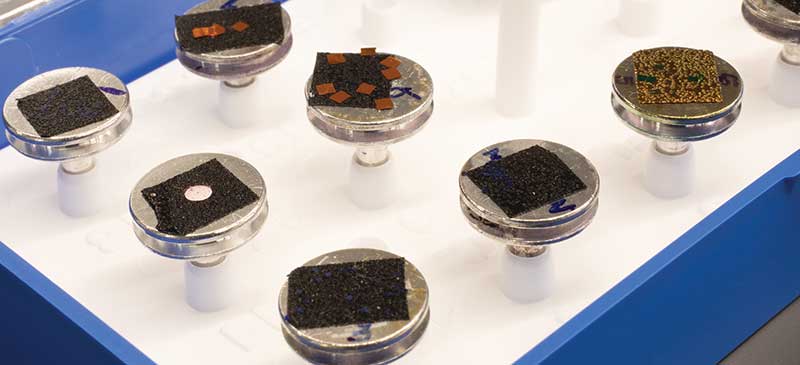
written by CHRIS BARRETT ’08 for URI’s Momentum: Research & Innovation Magazine, Spring 2021
When plastics break apart, the material leaves a trail of pieces often visible only with specialized equipment. That’s where the University’s core facilities and their researchers step in with equipment and expertise. To understand the role of plastics in our world, imaging equipment housed within the University of Rhode Island’s (URI) core facilities analyze plastic particles so small that it would be like finding a single drop of water in an Olympic sized pool.
Scientists leverage that data to trace plastics pollution in waterways to its source, to understand how plastic particles harm animals, as well as to develop nanoplastics that deliver life-saving medicines into our bodies. “People are looking at microplastics in a lot of different areas; they are popping up everywhere and we don’t know if they’re good, bad or neutral,” said Rhode Island Consortium of Nanoscience and Nanotechnology Director Irene Andreu.
Yet, looking at micro and nanoplastics poses significant challenges. Plastics comprise a wide variety of polymers with additives to change their texture, rigidity and color. When plastics break apart, the material leaves a trail of pieces often visible only with specialized equipment. That’s where the University’s core facilities and their researchers step in with equipment and expertise.

